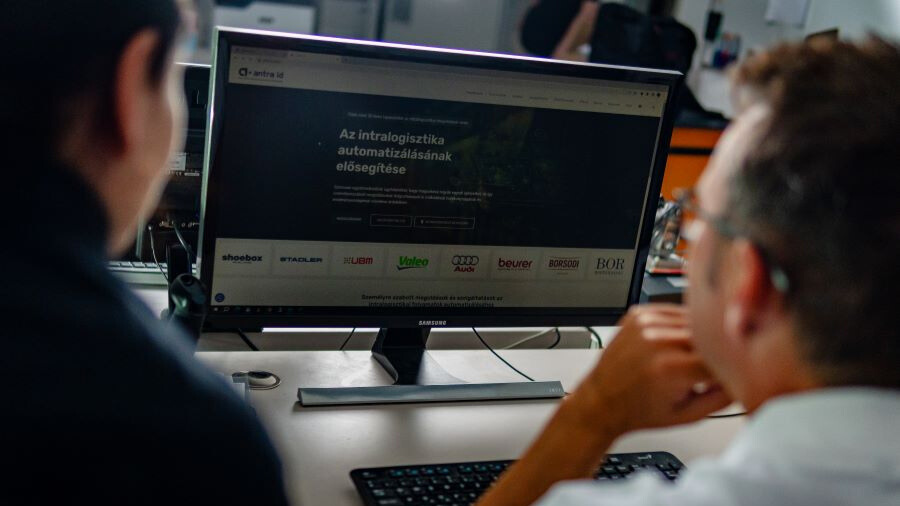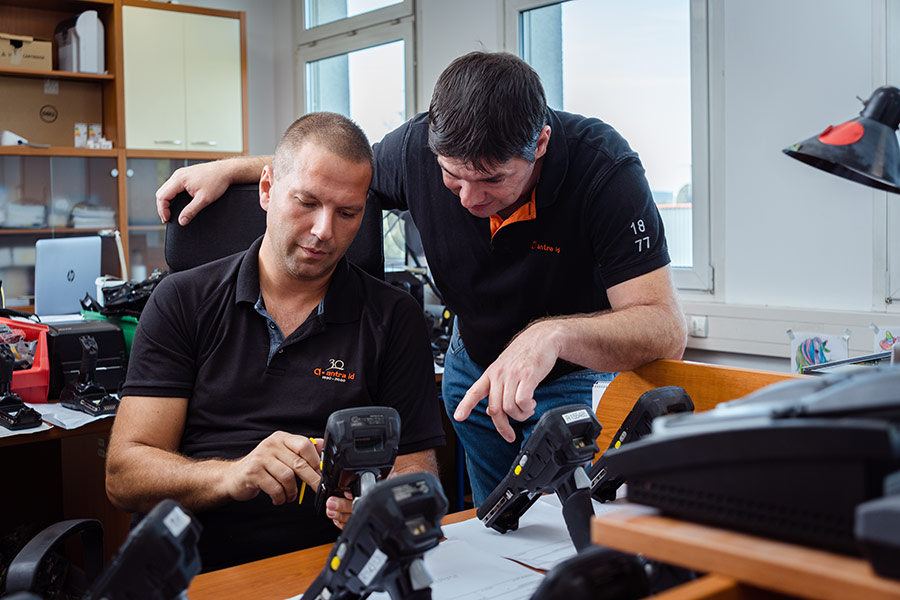Today, you can often see staff wandering around warehouses with a printed picking list. So, using a “shopping list” of order items works. But is it effective? Once the number of orders exceeds a certain level, it becomes increasingly important to reduce the workload of the picking staff, as this reduces errors and increases efficiency. Dániel Solti, programmer at Auware Engineering Kft., János Pesti, IT manager at Antra ID Kft., and Zoltán Kovács, applications engineer at Turck Hungary Kft., spoke to TechMonitor readers about the operation of the Pick to Light picking system, which simplifies warehouse work.
Where does the relationship between the three companies come from?
Zoltán Kovács: We used to do joint projects with Antra ID and Auware when both companies went their separate ways. We installed systems at the largest multinational companies, even Pick to Light solutions. Both companies are now part of Central European Automation Holding (CEAH), which makes it much easier to work together, and we are confident that this will be reflected in quality and results.
János Pesti: I can only confirm what has been said. We were and are excellent technological partners. We are very good partners because we were looking for a sensor and RFID technology background to rely on as a system integrator. The merger under the CEAH umbrella was intended to enable us to take on larger projects together, which is also helped by the technological background that Turck can provide.
What are the benefits of Pick to Light?
János Pesti: With Pick to Light, a semi-automatic, paperless, light-based picking system, incorrect picking can be almost eliminated. We are talking about a visual system, which is a very precise operation. The quick and easy training, with a very low error rate, is reduced to a fraction, so most of the time savings come from not having to make searches and corrections.
In the paperless process, warehouse workers are guided by visual signs to the shelf or storage box containing the order, where a display shows the item to be picked, the current quantity, and other information if required. A confirmation button on the display indicates the completion of the picking process. reinforces the power of. Robotic picking is higher than this, but wherever it is feasible, it is a huge help and productivity boost for Pick to Light picking.
Zoltán Kovács: We are not just talking about a simple display because every display has several additional sensors built in. In the case of shelving systems, it is a common mistake for the worker not to reach under the shelf indicated. Such a false movement is detected by one of the sensors. The other sensor confirms the correct picking by pressing a button.
What goals did your current client set before setting up a picking system?
János Pesti: He wanted to create a paperless procedure and cleaner documentation to spend less time searching, reduce the rate of errors in picking, and of course, increase the performance. It was important to him that the system should be scalable so that it could be expanded and further developed. Pick to Light is, therefore, not the end goal in this case but an intermediate stage. The latest picking system, created jointly, goes beyond a Pick to the Light solution, as it also includes an automated web interface so that the data generated by the customer’s logistics system is received, organized, and evaluated. This allows for an extremely cost-effective operation for the customer in the electronics industry, as hundreds of highly stable sensors are installed as a bundle.
How were the tasks distributed throughout the project?
Zoltán Kovács: The sensors are products of American Banner Engineering, which are distributed by Turck, since in the world of automation, the two companies’ product ranges complement each other perfectly.
Dániel Solti: Auware created the program that connected the Antra ID and the devices that Turck supplied. We installed 116 devices to cover the entire collection system. We communicate via the Modus protocol with the devices, making it relatively easy to work with large systems. The bus system allows all the data to be strung together on a single cable line, significantly reducing the required cable. Pick Light systems are available in several versions, with radio solutions available accordingly. In this project, the emphasis was on easy maintenance later, but the power supply was also made extremely simple. The installation of the sensors and displays took around two months, and the project work took a further three months.
János Pesti: Auware provided a robust interface technology for joint projects, which allows building the system from the bit/byte level. And Antra provided the knowledge to integrate the tools on an enterprise scale. Together, we can offer a complete service package, as an intralogistics system needs to be installed and ensure availability and subsequent further development.
What next?
János Pesti: From now on, all information is at the client’s disposal about the collection schedule, the start and end of the tasks, and the distances traveled by the staff. This information is then transmitted in real-time to the ERP information system and the warehouse management system. But the information is also the basis for all further development. Stock-out reports will likely be integrated into the system, or even artificial intelligence will be used to optimize logistics processes. We are currently developing a statistical system to monitor feedback and progress in efficiency. Apart from the sensors, all other tools are products of CEAH-affiliated companies so that any changes can be implemented quickly. And this responsiveness is worth its weight in gold for us and our customers in the electronics industry.



